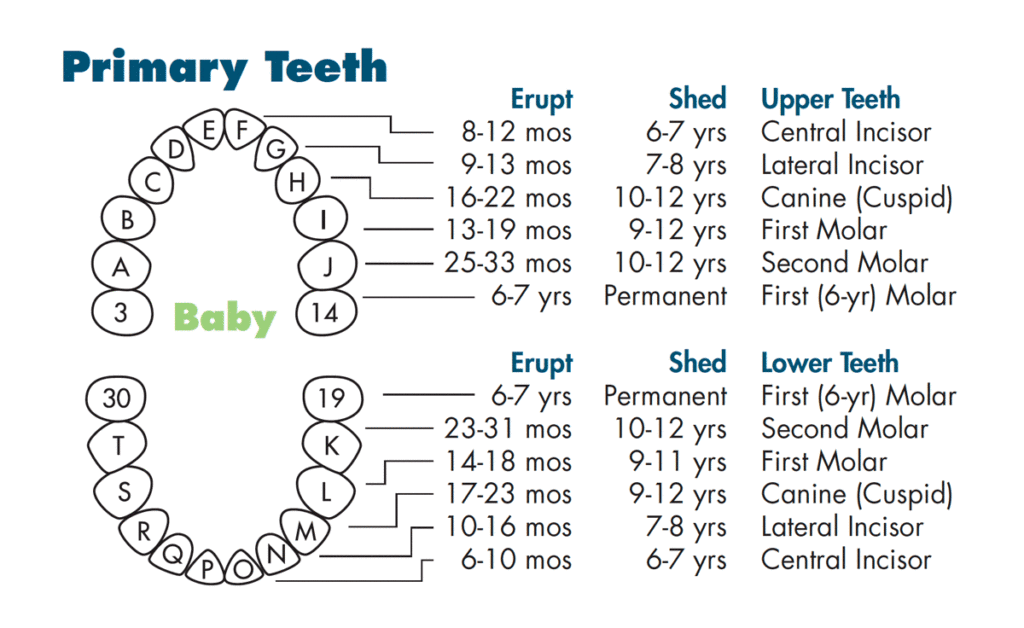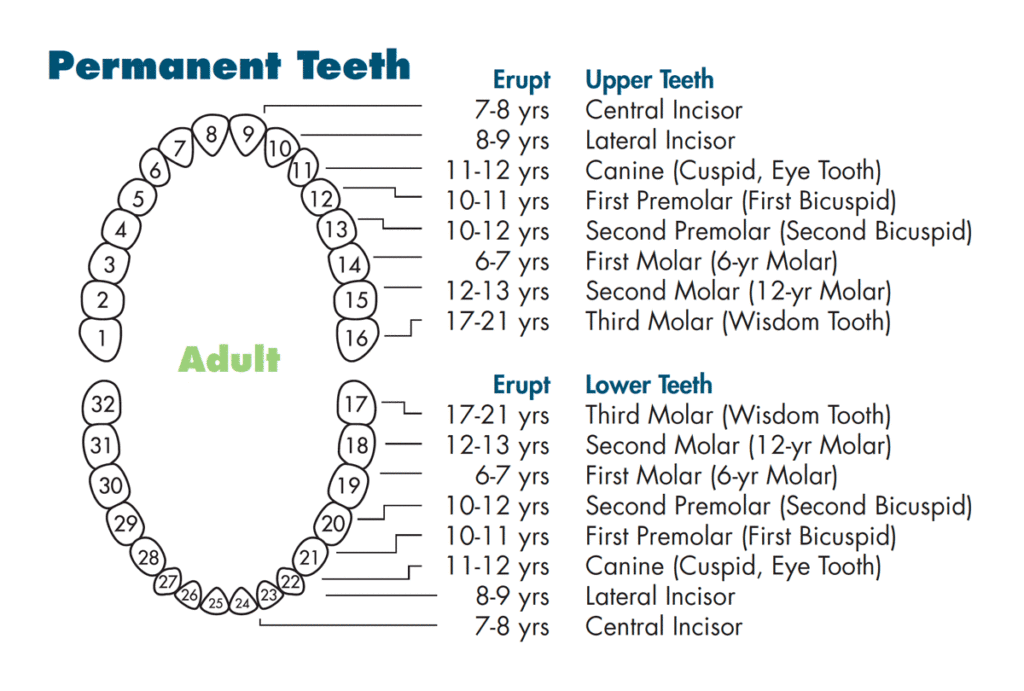Understanding Primary and Permanent Teeth in Children
Understanding Primary and Permanent Teeth in Children
Throughout life, you will develop two sets of teeth: primary (baby) teeth and permanent (adult) teeth. Both sets play a critical role in chewing, speaking, and maintaining overall oral health, making regular dental care essential for both.
When Do Primary Teeth Erupt?
Primary teeth, also known as baby teeth, typically begin to erupt between 6 to 8 months of age, though it’s not uncommon for some children to start teething closer to their first birthday. By the age of 3 ½, most children will have all 20 primary teeth in place. These teeth serve as placeholders for the permanent teeth and are important for proper speech development and chewing.
Eruption of Permanent Teeth
Permanent teeth start to appear around age 6, beginning with the first molars and incisors. By the age of 12 to 14, most of the permanent teeth, excluding wisdom teeth, will have erupted. Wisdom teeth, also known as third molars, typically emerge between the ages of 17 and 25. However, due to space limitations in the mouth, many people need to have their wisdom teeth removed to prevent overcrowding or misalignment. In total, there are 32 permanent teeth, including the wisdom teeth.
Types of Teeth and Their Functions
Each type of tooth has a specific function. The front teeth, called incisors, are designed for cutting food. The pointed, fang-like teeth next to them are known as canines or cuspids and are used for tearing food. The premolars (also called bicuspids) are located behind the canines and help with crushing food, while the molars, situated at the back of the mouth, are responsible for grinding food. Both primary and permanent teeth require regular brushing, flossing, and routine dental check-ups to ensure they remain healthy and functional.
Importance of Dental Care for Both Sets of Teeth
Whether it’s primary or permanent teeth, maintaining oral hygiene is critical. Regular brushing, flossing, and dental check-ups ensure that your child’s teeth stay healthy, preventing issues like cavities, gum disease, and tooth misalignment. Prioritizing dental care during these crucial stages helps support your child’s long-term oral health and development.
Teeth Diagram

Check out this helpful diagram showing when primary teeth erupt and shed, along with the timeline for permanent teeth to appear. Use this guide to understand your child’s dental development and care milestones.
